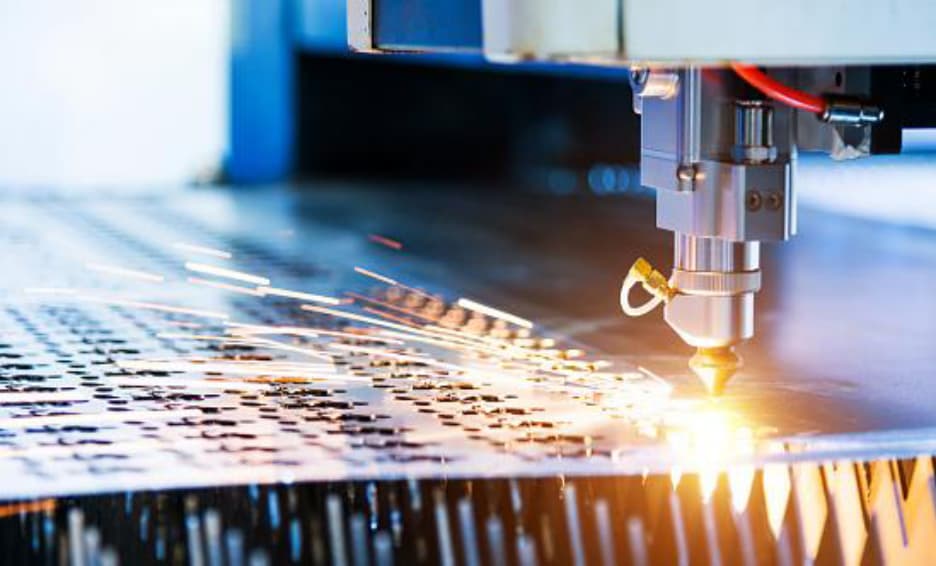In today’s fast-paced manufacturing world, precision cutting for industrial parts has become an indispensable part of the production process. As technology evolves, industries are seeking cutting-edge methods to ensure parts are not only accurate but also consistent in quality. This article explores how precision cutting is reshaping the manufacturing landscape and why it is crucial for industrial success.

The Importance of Precision in Manufacturing
Precision is the backbone of manufacturing. It ensures that each component fits perfectly with others, reducing the risk of errors and inefficiencies. Precision cutting tools and techniques are designed to achieve this high level of accuracy, which is vital for producing top-notch industrial parts.
How Precision Cutting Enhances Industrial Parts
Precision cutting techniques are game-changers for industrial parts. They enhance the quality, functionality, and longevity of each piece. This process allows for exact measurements, leading to a better fit and finish. Moreover, it minimizes material waste, making production more cost-effective.
Innovative Techniques in Precision Cutting
The evolution of cutting technologies has been remarkable. From traditional methods to sophisticated processes like precision metal cutting and waterjet cutting, these advancements continue to refine how industrial parts are crafted.
Laser Cutting
Laser cutting is a highly accurate process used for cutting a wide variety of materials. It provides clean cuts with intricate detail, ideal for complex designs in industrial parts.
Waterjet Cutting
Waterjet cutting is another versatile technology that uses a high-pressure stream of water to cut materials. This technique is particularly useful for cutting metal and is valued for its ability to maintain material properties without adding heat, reducing thermal distortion.
Applications of Precision Cutting
In the industrial sector, precision cutting is applied in various industries, including aerospace, automotive, and electronics. These industries require parts that meet stringent standards, and precision cutting delivers with unparalleled accuracy and repeatability.
Aerospace Industry
In aerospace, precision is non-negotiable. Components must withstand extreme conditions, and precision cutting ensures that every part functions seamlessly, contributing to the overall safety and performance of aircraft.
Automotive Industry
Precision cutting is vital in the automotive sector for manufacturing complex parts. It improves assembly accuracy and vehicle performance, which enhances safety and customer satisfaction.
Electronics Industry
In electronics, where space is at a premium, precision cutting allows for the creation of compact and efficient parts that power devices used in everyday life.
Choosing the Right Precision Cutting Method
Selecting the appropriate precision cutting method depends on various factors, such as material type, part design, and production volume. Industries must evaluate these factors to choose a process that aligns with their needs.
Material Considerations
The material being worked on significantly influences the choice of cutting method. Metals like aluminum and stainless steel require different approaches due to their properties. For example, high-accuracy aluminum cutting might involve different tools than cutting stainless steel precisely.
Production Volume
The scale of production also affects the choice of cutting method. High-volume production might benefit from automated processes, while small-scale operations could use manual techniques for flexibility.
Challenges in Precision Cutting
While the benefits of precision cutting are significant, the process is not without its challenges. Issues such as tool wear, material handling, and maintaining accuracy even over long production runs must be addressed.
Tool Wear
Tool wear is a common issue that can impact cutting precision. Regular maintenance and replacement of cutting tools are essential to ensure the process remains efficient.
Material Handling
Handling materials, especially large or heavy ones, requires careful planning and execution to avoid damage and ensure precise cutting.
The Future of Precision Cutting
The future of precision cutting promises to be bright, with technological advancements opening new possibilities. As industries continue to innovate, precision cutting will play a pivotal role in transforming ideas into reality.
Automation and Robotics
The integration of automation and robotics is set to revolutionize precision cutting. These technologies offer higher speed and consistency, further reducing errors and enhancing productivity.
Smart Technologies
Emerging smart technologies, including AI and IoT, are being integrated into cutting processes. This development facilitates real-time monitoring and adjustments, leading to even greater precision and efficiency.
Conclusion
Precision cutting for industrial parts is more than just a technique; it is a crucial part of modern manufacturing. Its impact on quality, efficiency, and sustainability cannot be overstated. As industries continue to evolve, precision cutting will undoubtedly remain at the forefront, driving innovation and excellence.

FAQ Section
- What materials can be cut using precision cutting?
Materials like metals, plastics, and even some ceramics can be effectively cut with precision methods. The choice of cutting technology may vary depending on the material’s properties.
- How does precision cutting impact production costs?
By reducing waste and improving accuracy, precision cutting often leads to lower overall production costs and higher product quality.
- Is precision cutting suitable for custom manufacturing?
Yes, precision cutting is highly suitable for custom manufacturing as it allows for detailed customization to meet specific client needs or unique design requirements.
For more insights into precision cutting techniques, you can refer to this research article.
This article contains affiliate links. We may earn a commission at no extra cost to you.

